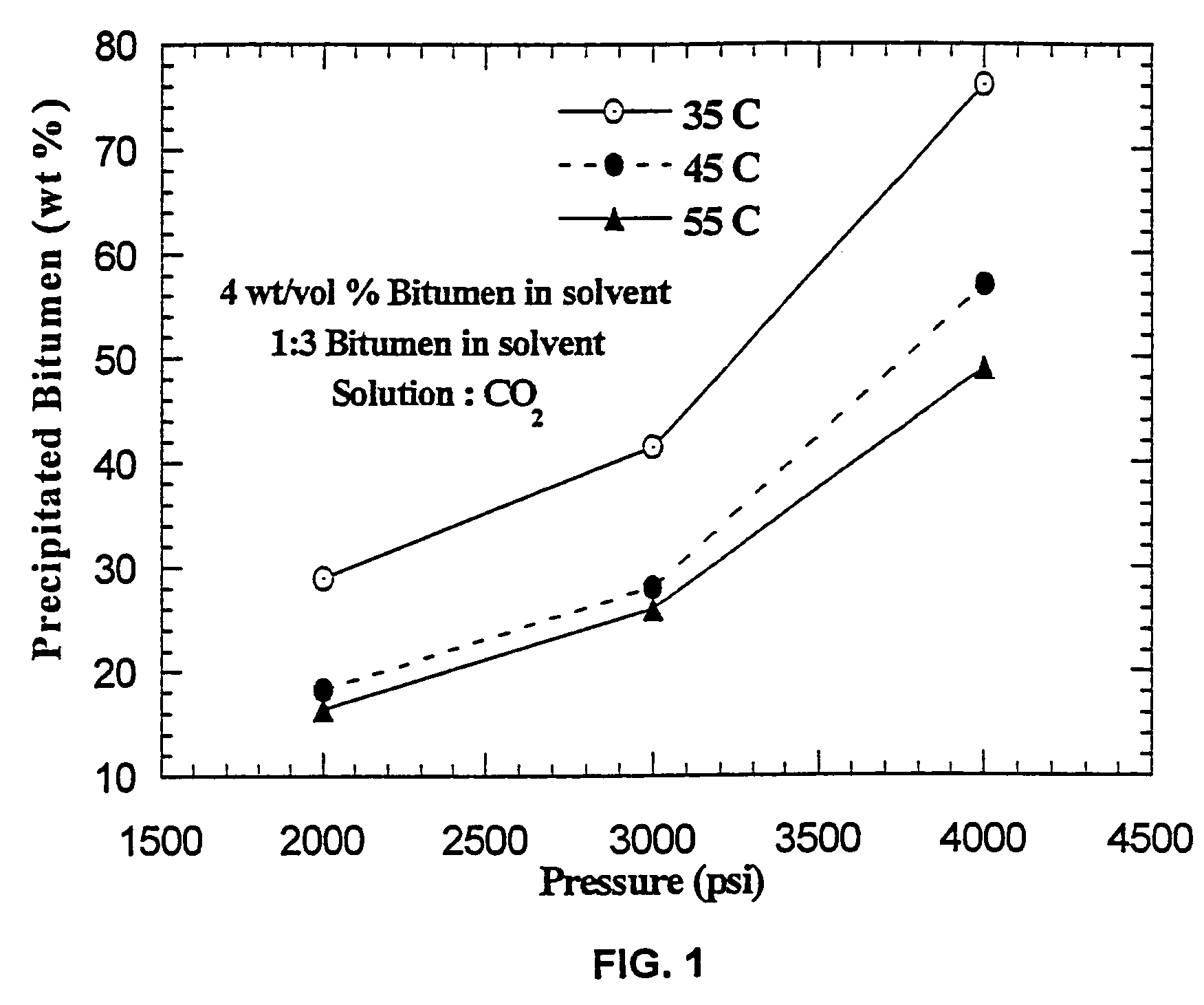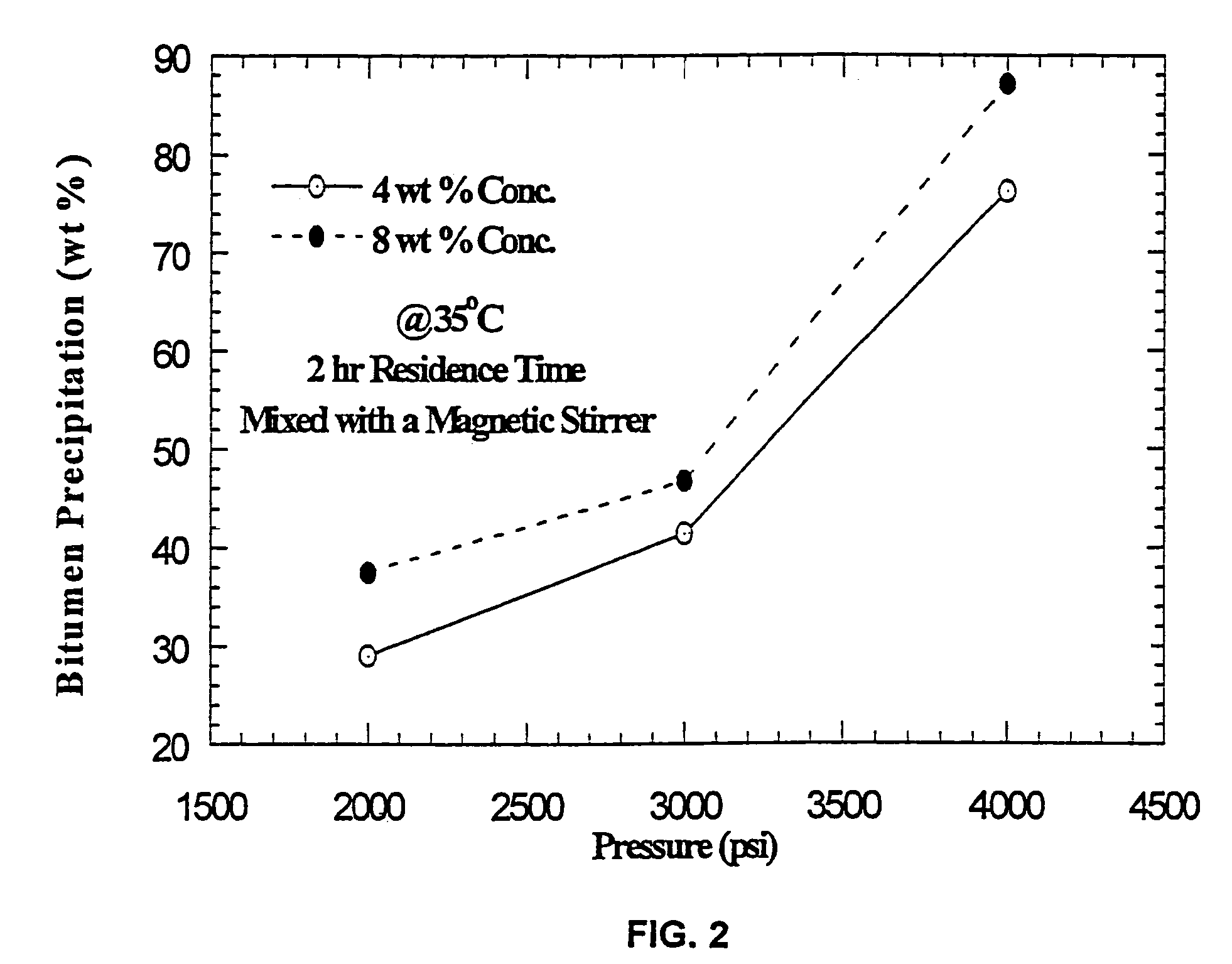Methods and compositions for removing residues and substances from substrates using environmentally friendly solvents
a technology of solvents and substrates, applied in solvent extraction, selective extraction of pitch/asphalt/bitumen, separation processes, etc., can solve the problems of high cost of use, maintenance, control, and disposal, and many of the solvents typically used in the industry. , to achieve the effect of reducing the amount of precipitated bitumen
- Summary
- Abstract
- Description
- Claims
- Application Information
AI Technical Summary
Benefits of technology
Problems solved by technology
Method used
Image
Examples
example 1
Experimental Protocol For Single-Batch Extraction Experiments of Tar Sand Samples Using CO2
[0064]A tar sand sample is placed in a high-pressure 20 mL capacity reactor. The reactor is heated to the desired temperature, the system is pressurized with CO2 at 10 mL / min flow rate until the desired pressure is reached by means of a high-precision syringe pump. The system is left for 1 hr at the desired temperature and pressure after which CO2 and the extracted bitumen is conveyed under pressure to another reactor supplied with sapphire windows (view-cell) at a rate of 10 mL / min. After cooling the extract to ambient temperature, CO2 is slowly discharged from the system at a rate of 1 mL / min. The system is thereafter opened, the extracted bitumen is collected quantitatively by dissolving in MeCl2, and the solvent is evaporated in a vacuum oven at 50° C. for 24 hrs.
[0065]The mass of the extracted bitumen is calculated and the percentage extraction is obtained. The total bitumen content of ...
example 2
Experimental Protocol For Single-Batch Extraction Experiments of Asphalt Samples Using CO2
[0066]The procedure according to Example 1 is repeated except that an asphalt sample is employed instead of a tar sand sample.
example 3
Experimental Protocol For Single-Batch Extraction Experiments of Bitumen Samples Using CO2
[0067]The procedure according to Example 1 is repeated except that a bitumen sample is employed instead of a tar sand sample.
PUM
| Property | Measurement | Unit |
|---|---|---|
| flash point | aaaaa | aaaaa |
| boiling point | aaaaa | aaaaa |
| boiling point | aaaaa | aaaaa |
Abstract
Description
Claims
Application Information
 Login to View More
Login to View More - R&D
- Intellectual Property
- Life Sciences
- Materials
- Tech Scout
- Unparalleled Data Quality
- Higher Quality Content
- 60% Fewer Hallucinations
Browse by: Latest US Patents, China's latest patents, Technical Efficacy Thesaurus, Application Domain, Technology Topic, Popular Technical Reports.
© 2025 PatSnap. All rights reserved.Legal|Privacy policy|Modern Slavery Act Transparency Statement|Sitemap|About US| Contact US: help@patsnap.com



